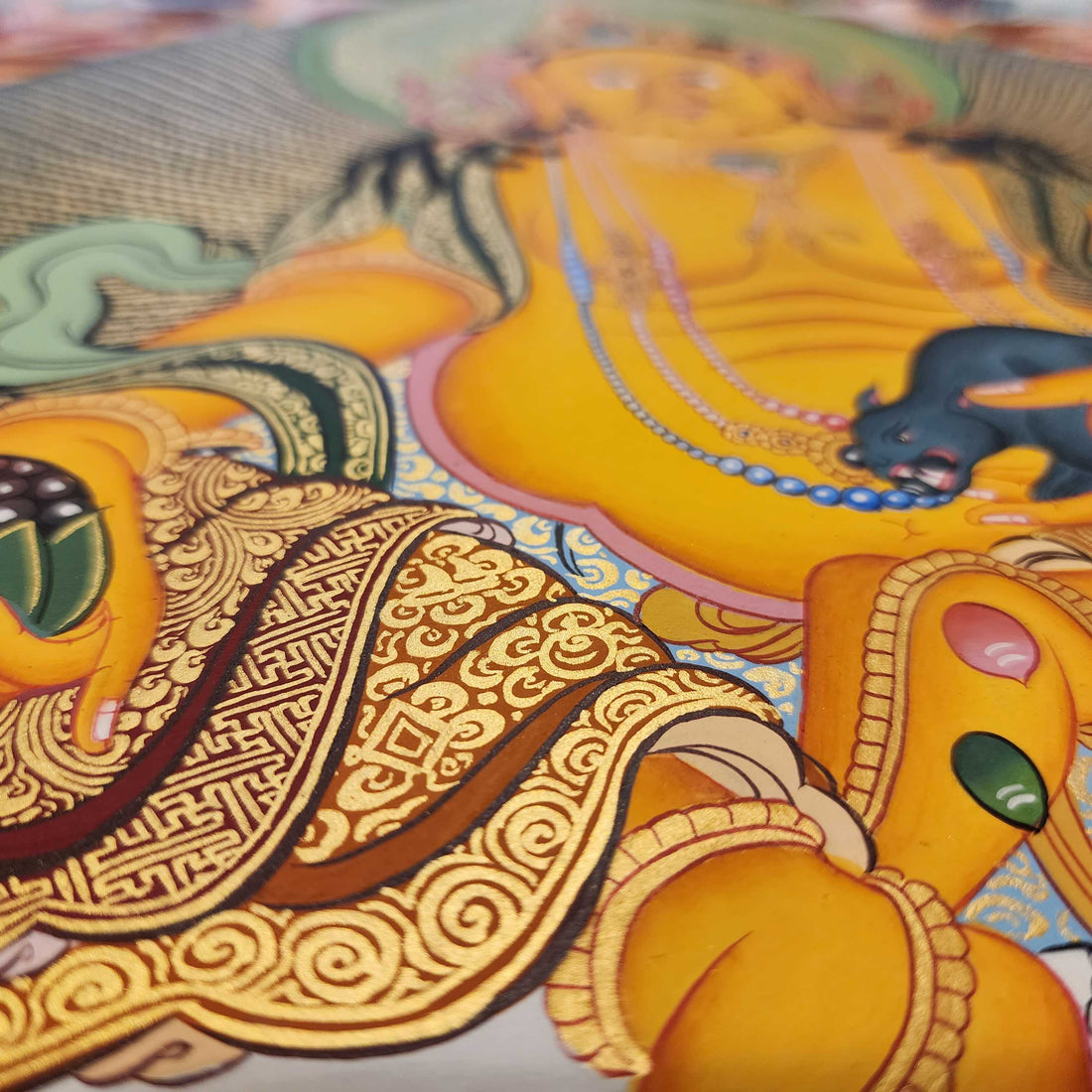
Akshobhya Buddha: The Mirror of Wisdom and Unshakable Mind
Share
Introduction
Akshobhya Buddha, one of the Five Dhyani Buddhas, represents the mirror-like wisdom that reflects reality with perfect clarity and calm. In Thangka art, his tranquil blue form embodies strength, stability, and the ability to transform anger into deep understanding.
Who Is Akshobhya Buddha?
Akshobhya (Sanskrit: Akṣobhya, meaning “Immovable One”) symbolizes the quality of unshakable awareness.
He made a powerful vow never to be ruled by anger or hatred, even in the face of great challenges. Through this vow, he attained enlightenment and became the Buddha of the Eastern Pure Land, known as Abhirati. The Land of Joy.
Symbolism in Thangka Art
— Blue Body: Represents clarity, calmness, and the depth of wisdom. Like a still, reflecting ocean.
— Right Hand (Bhumisparsha Mudra): Touching the earth, symbolizing steadfast resolve and connection to truth.
— Left Hand: Holds a vajra (thunderbolt), symbolizing indestructible power and enlightenment.
— Elephant Throne: Signifies strength and determination.
— Direction: East The rising light of awakening.
Spiritual Meaning
— Akshobhya transforms anger and hatred into mirror-like wisdom, reflecting reality without distortion.
— His teachings encourage stability of mind and emotional balance during difficulties.
— He represents the power of mindfulness. To see life clearly, without judgment or reaction.
Depiction in Thangka Art
Thangka paintings of Akshobhya often show him seated in deep meditation, calm and radiant, with a luminous blue aura.
He is surrounded by peaceful landscapes, symbolizing inner serenity. His still expression mirrors the immovable strength of enlightenment.
Devotional Practice
— His mantra, “Om Akshobhya Hum,” purifies anger, negative emotions, and mental restlessness.
— Meditating on his image cultivates inner peace, courage, and unshakable focus.
— Akshobhya Thangkas are often placed in meditation spaces to inspire calm and mindfulness.
Conclusion
Akshobhya Buddha teaches the wisdom of stillness. The ability to face challenges with an unshakable heart. His Thangka embodies the calm, mirror-like awareness that reflects the truth beyond illusion, guiding practitioners toward peace and clarity.
